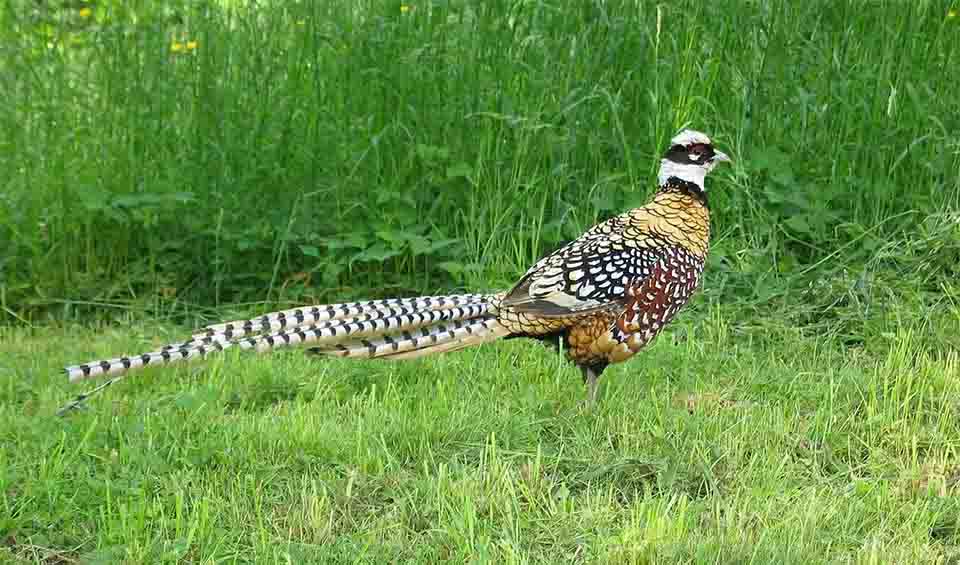A striking and rare species of pheasant known for its impressive size and the remarkable length of its tail feathers. Native to the evergreen forests of central and eastern China, this bird is named after the British naturalist John Reeves, who first introduced live specimens to Europe in the 1830s.
This large bird is robust and hardy, capable of adapting to a wide range of temperatures, which is why it is described as a monotypic hard bird. They are well-suited to the varied climate of their natural habitat, which can range from the cold temperatures of the higher altitudes to the warmth of the lower regions.
The males of this species are particularly notable for their plumage. They possess a white and black plumage with a red patch around their eyes and a remarkably long, barred tail that can reach over 2 meters (about 6.6 feet) in length. This tail is the longest natural tail feather of any bird species, as noted in the Guinness World Records 2008 edition. Females, while less ornate, have their own muted elegance with mottled brown feathers that provide camouflage in their woodland habitats.
Reeves’s Pheasants are ground-nesting birds that prefer to build their nests on elevated ground, offering protection from potential flooding and predators. During the breeding season, males can become quite territorial and exhibit aggressive behavior towards other pheasants and potential threats, including humans.
Unfortunately, the Reeves’s Pheasant is facing a critical survival challenge. With an estimated wild population of only around 2,000 individuals, the species is classified as threatened. The primary threats to their survival are habitat loss and fragmentation due to agricultural expansion, as well as overhunting. The bird’s spectacular tail feathers have made it a target for poachers, and it is also hunted for meat.
Distribution
 China
China Official estimate
Official estimate
Anything we've missed?
Help us improve this page by suggesting edits. Glory never dies!
Suggest an editGet to know me
Terrestrial / Aquatic
Altricial / Precocial
Polygamous / Monogamous
Dimorphic (size) / Monomorphic
Active: Diurnal / Nocturnal
Social behavior: Solitary / Pack / Herd
Diet: Carnivore / Herbivore / Omnivore / Piscivorous / Insectivore
Migratory: Yes / No
Domesticated: Yes / No
Dangerous: Yes / No





